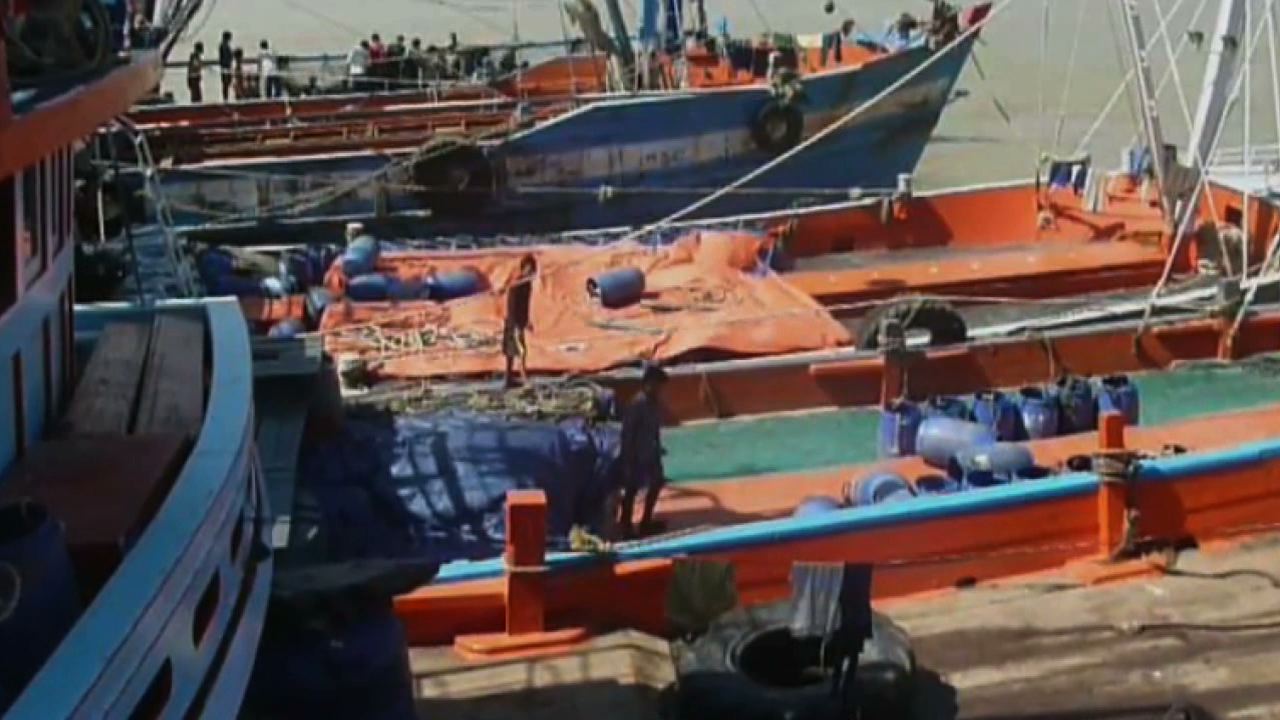A three-month ban on offshore fishing has been ordered by Burma’s Department of Fisheries to allow marine fish stocks to replenish.
Myint Thu, deputy-director general of the department, said all domestic and foreign fishing operators are subject to the fishing ban throughout the spawning season.
“In a bid to conserve fish and prawn resources we are declaring a ban on offshore fishing by both domestic and foreign operators throughout the spawning season of June, July and August,” he said.
Relevant government ministries have been urged to strictly enforce the order, and fishing trawler owners have been warned that if caught violating the ban by the navy, they will face legal action.
In contrast to this year’s unconditional ban, previously the embargo lasted only throughout May and June, and fishing trawlers were in some cases still permitted to operate.
Maung Maung Soe, chairman of the Marine Fisheries Association, said that the extended total ban risks the livelihoods of those in the fishing industry.
“This can make life difficult for everyone associated with fisheries, including fishermen, and especially for the 40,000- 50,000 workers in cold-storage and dried fish enterprises, whose employment will come to a stop. After the three months, it will also be difficult to take all of them back,” he said.
Maung Maung Soe said the association has requested that the government consider allowing 50 percent of operations to continue during the spawning season.
[related]
Meanwhile, official media on Monday reported a precipitous decline in the fish resources in Burmese seas, citing a recent survey by the Norwegian researcher Dr Fridtjof Nansen which found a decline of 80 percent in fish stocks over the past three years. In 2013 only 391,000 tons of fish reserves remained, falling from around 1,750,000 tons 30 years ago, the project found.
“A contributing factor in the sharp decline of fish reserves is a rise in the number of fishing operators, as well as the use of certain fishing methods against regulations, such as using particular types of nets that also catch new spawn,” said Myint Thu.
There are around 2,600 fishing trawlers operating in the seas surrounding Burma, he added.
Burmese parliament, following the lead of neighbouring countries, approved the three-month fishing ban that also affects foreigner trawlers.
The value of Burma’s fishery exports in recent years have been steadily declining. The 2014-15 fiscal year export value was approximately US$420 million, nearly $100 million lower than the previous year’s $518 million.
Burma, despite being the country with the largest fish reserves in Southeast Asia, is lagging behind in foreign exports compared to other countries such as Thailand and Vietnam due to a lack of investment in production techniques and technology.
Burma’s principal fishery products, including saltwater fish, shrimp, crab, eels and dried prawns, are exported to key markets including China, Japan, South Korea, the US and Europe.
A new government initiative launched on 25 March, known as the National Export Strategy, listed fisheries as a ‘priority sector’ – alongside timber, rubber, textiles, tourism, and other growth markets – as the country vamps up its trade diversification.



